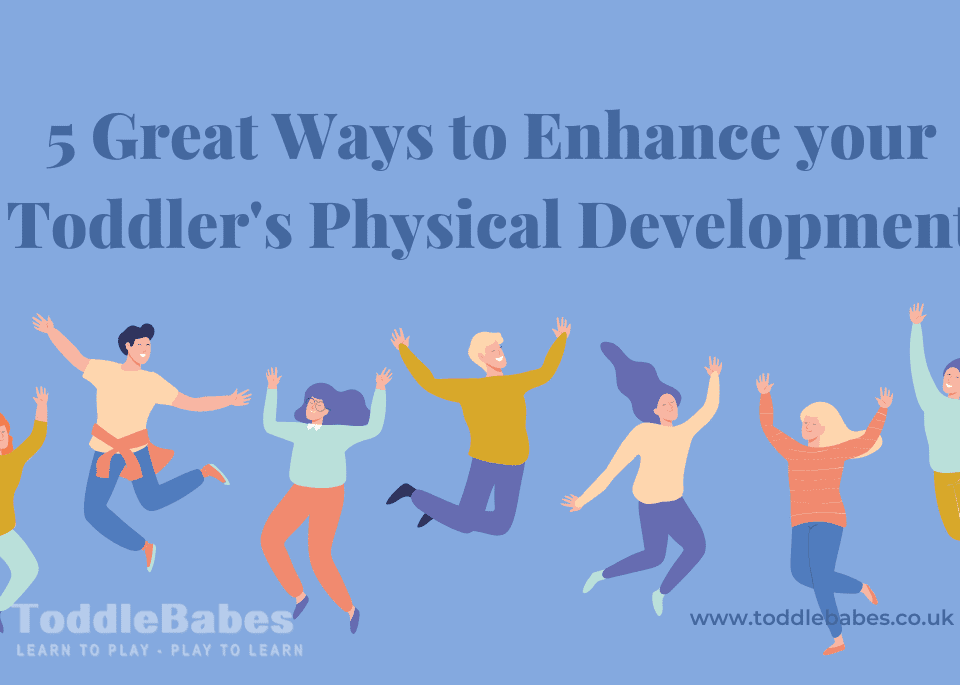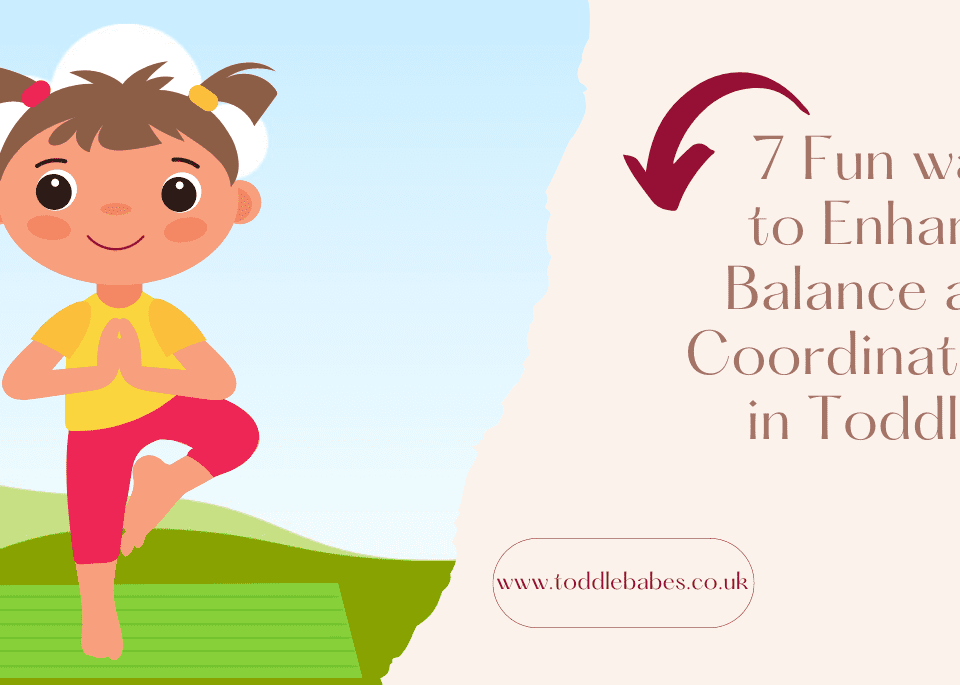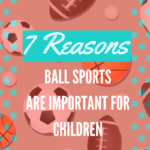
7 Reasons Why Ball skills are Important
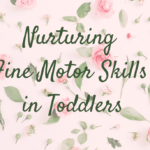
Nurturing Fine Motor Skills in Toddlers
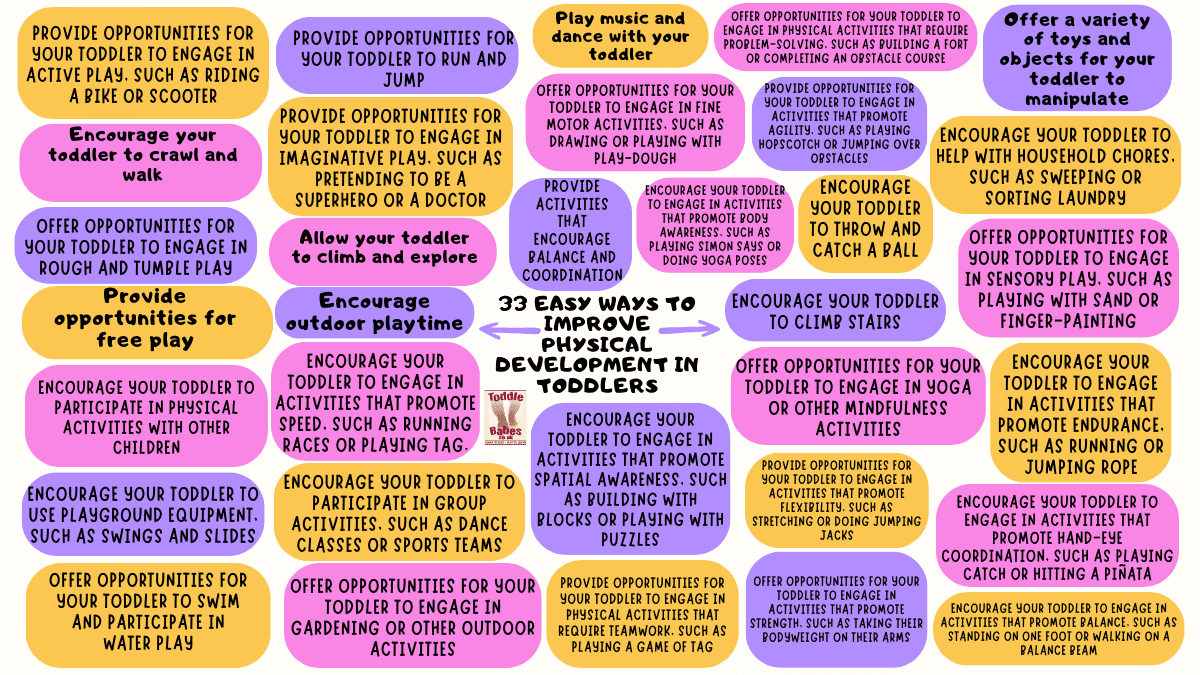
Table of Contents
Physical Development: Advice and Activities for Toddlers
The early years of a child’s life, especially the age of two to three, are crucial for their physical development. It is during this time that toddlers experience significant growth and development milestones, as their bodies rapidly evolve and gain new abilities. Engaging in appropriate activities and providing guidance can greatly contribute to their overall physical development, helping them build strength, coordination, and body awareness.
To stimulate and support the physical growth of toddlers, it is important to incorporate a variety of activities that are both enjoyable and developmentally appropriate. Here are some valuable advice and fun activities that can contribute to their physical development:
Encouraging Gross Motor Skills
Gross motor skills are a set of physical abilities that involve the use of large muscle groups and coordination. These skills require the synchronization and control of multiple muscle groups working together to perform tasks that involve the whole body or specific body parts. Gross motor skills are essential for a wide range of movements and activities that support physical development, mobility, and overall well-being.
Large muscle groups such as those found in the legs, arms, and trunk are engaged in gross motor skills. These skills are crucial for fundamental movements such as crawling, walking, running, jumping, throwing, catching, kicking, and balancing. They provide the foundation for more complex movements and activities in later years.
Developing gross motor skills is a gradual process that begins in infancy and continues throughout childhood. Infants initially start by gaining control over their neck muscles, followed by rolling over, sitting up, crawling, and eventually standing and walking. As children grow older, they refine their gross motor skills through practice, play, and age-appropriate activities.
Coordination is a key component of gross motor skills. It involves the ability to synchronize and control different muscle groups to perform smooth, purposeful movements. This coordination enables children to perform activities such as running without stumbling, catching a ball, or jumping with precision.
Gross motor skills play a vital role in daily activities and overall physical development. They not only enable children to explore and interact with their environment but also contribute to their physical fitness, body awareness, and spatial perception. Developing strong gross motor skills is crucial for participating in sports, engaging in physical play, and maintaining a healthy and active lifestyle.
It is important to provide children with ample opportunities to practice and enhance their gross motor skills. This can be achieved through age-appropriate physical activities, play, and structured exercises that challenge their abilities and promote their physical development. By engaging in activities that stimulate and refine gross motor skills, children can develop strength, coordination, balance, and confidence in their physical abilities, setting the stage for a lifetime of active and healthy living.
Here are some activities to enhance these skills:
- Active Play: Encourage running, jumping, hopping, and climbing on safe surfaces, such as a playground or soft mats.
- Obstacle Courses: Set up simple obstacle courses using cushions, cones, or tunnels to promote balance, coordination, and spatial awareness.
- Dancing and Movement: Engage in music and dance sessions to foster coordination, rhythm, and body awareness.
Fine Motor Skills
Fine motor skills involve the coordination and control of small muscle groups, particularly in the hands and fingers. These skills are essential for performing precise and intricate movements that require hand-eye coordination, finger strength, and dexterity. Developing fine motor skills is crucial for tasks such as writing, drawing, using utensils, buttoning clothes, tying shoelaces, and manipulating small objects.
While gross motor skills focus on larger movements, fine motor skills complement them by allowing for more refined and delicate movements. Both sets of skills work together to support overall physical development and enable children to engage in a wide range of activities.
To support the development of fine motor skills, it is important to provide children with activities that engage and strengthen the small muscles in their hands and fingers. Here are some activities that can assist in developing these skills:
- Puzzles: Introduce age-appropriate puzzles that require hand-eye coordination and finger manipulation.
- Playdough and Clay: Allow children to explore and mould playdough or clay, which aids in strengthening their hand muscles and refining dexterity. Allow your child to squish, roll, and mould playdough or clay. This tactile activity strengthens hand muscles and enhances finger dexterity.
- Scribbling and Colouring: Offer chunky crayons or markers and large sheets of paper for scribbling and colouring activities to enhance hand control and pencil grip. Give your child chunky or triangular-shaped crayons or markers designed for small hands. Drawing, colouring, and tracing activities with these tools promote hand control and grip.
- Play with building blocks: Encourage your child to stack and manipulate building blocks. This activity requires precise finger movements and hand-eye coordination.
- Stacking toys: Provide toys with smaller parts that require your child to stack or sort them. These activities help develop finger dexterity and hand control.
- String beads or pasta: Provide beads or pasta with holes and let your child string them onto a string or shoelace. This activity improves hand-eye coordination and fine motor control.
- Use scissors for cutting practice: Provide child-safe scissors and give your child strips of paper or practice cutting lines. This activity helps develop hand strength, *bilateral coordination, and precision.
- Manipulate small objects: Offer your child opportunities to manipulate small objects such as buttons, beads, or puzzle pieces. These activities refine their fine motor skills and finger control.
- Practice self-help skills: Encourage your child to perform self-help tasks independently, such as buttoning their clothes, zipping their jacket, or using utensils during meals. These activities refine their fine motor skills and promote independence.
It is important to provide a variety of activities that target different aspects of fine motor skills. Gradually increase the complexity of the tasks as your child develops their abilities. Additionally, always ensure a safe and supervised environment during fine motor activities to prevent any accidents or injuries.
By engaging in activities that promote the development of fine motor skills, children can enhance their hand-eye coordination, finger dexterity, and overall fine motor control. These skills are not only crucial for daily tasks but also lay the foundation for future academic and functional success.
*Bilateral coordination refers to the skill of coordinating and using both sides of the body simultaneously or in alternating movements. It involves the ability to perform tasks where both the right and left sides of the body work together. For instance, pushing a stroller or lifting a large object requires the synchronized use of both sides of the body with identical movements. On the other hand, tying shoelaces is an example of bilateral coordination where the right and left sides of the body work together, but they perform different movements.
Balance and Coordination
Developing balance and coordination is crucial for toddlers as it lays the foundation for their physical abilities and overall development. Balance refers to the ability to maintain a stable position while coordinating and controlling body movements, while coordination involves the ability to synchronize different muscle groups and movements smoothly. Both skills are essential for performing various daily activities, such as walking, running, jumping, climbing, and participating in sports and physical play.
During the toddler years, children undergo rapid growth and development, and their balance and coordination skills significantly improve. Here are some key factors to consider when supporting the development of balance and coordination in toddlers:
Here are some activities to improve these skills:
- Walking on Balance Beams: Activities that promote balance and coordination are beneficial for toddlers. Simple games like walking in a line or balancing on one foot can help improve their balance and body awareness. Set up low and secure balance beams, such as taped lines on the floor, to help children practice balance and stability. Engage your child in balance games that challenge their equilibrium. Activities such as walking on a balance beam, stepping on stepping stones, or playing “Simon Says” with balance-related instructions encourage the development of balance and coordination.
- Riding Toys: Introduce tricycles or ride-on toys that require coordination and balancing skills. Introducing tricycles, balance bikes, or scooters to your toddler, provides them with opportunities to practice balance and coordination. These activities require the synchronization of leg movements and body control, enhancing their gross motor skills.
- Ball Games: Play simple ball games, such as rolling or catching a ball, to enhance hand-eye coordination and balance.
- Encourage active play: Provide ample opportunities for your toddler to engage in active play. Activities such as running, jumping, hopping, skipping, and dancing promote the development of balance and coordination. These activities challenge their body’s ability to maintain balance while coordinating their movements.
- Playground exploration: Take your child to age-appropriate playgrounds where they can explore various equipment such as slides, swings, and climbing structures. These activities require balance, coordination, and spatial awareness, allowing toddlers to improve their motor skills in a fun and stimulating environment.
- Yoga or stretching exercises: You can also incorporate dance or yoga movements that encourage coordination and flexibility. Engage your child in simple yoga or stretching exercises that focus on balance and coordination. Poses such as tree pose or aeroplane poses help improve body awareness, balance, and coordination.
- Dance or movement classes: Enroll your toddler in age-appropriate dance or movement classes. These activities involve rhythmic movements, coordination exercises, and spatial awareness, contributing to the development of balance and coordination.
- Outdoor exploration: Outdoor exploration allows toddlers to engage with nature, which in turn promotes their physical development. Take them for nature walks, encourage them to collect leaves or rocks, or let them explore different textures and surfaces like grass, sand, or gravel. Take your child to different outdoor environments such as parks, nature trails, or playgrounds with varying terrains. Walking on uneven surfaces, climbing over obstacles, and navigating different textures challenges their balance and coordination skills
- Supportive environment: Create a safe and supportive environment for your child to practice their balance and coordination skills. Ensure proper supervision, use age-appropriate equipment, and provide encouragement and support as they explore and challenge their abilities.
By engaging in activities that promote balance and coordination, toddlers can develop their motor skills, body awareness, and physical confidence. It is important to provide a variety of opportunities for practice, gradually increasing the difficulty level as they progress. Supporting the development of balance and coordination during the toddler years sets a strong foundation for their future physical abilities.
Sensory Exploration
Sensory activities play a vital role in a child’s overall development as they provide valuable opportunities for exploration, learning, and self-discovery. These activities engage the senses, including touch, sight, sound, taste, and smell, allowing children to make sense of the world around them and develop a deeper understanding of their own bodies.
Sensory activities can include anything from messy play with water, sand, or sensory bins, to exploring different textures, playing with scented materials, engaging in music and movement, and experimenting with various art mediums.
- Sensory exploration: Sensory activities allow children to explore and engage with different textures, materials, and sensory experiences. They can touch, manipulate, and interact with objects and substances of various textures, temperatures, and consistencies. This exploration fosters curiosity, cognitive development, and a deeper understanding of their environment.
- Stimulating brain development: Sensory activities stimulate the brain by activating multiple neural pathways. When children engage their senses, it enhances their brain’s ability to process information, make connections, and develop essential cognitive skills such as problem-solving, memory, and attention.
- Building fine motor skills: Many sensory activities involve fine motor skills, such as grasping, squeezing, pouring, and manipulating objects. These actions help develop hand-eye coordination, finger strength, and dexterity, which are essential for tasks like writing, drawing, and self-care activities.
- Promoting language development: Sensory activities provide opportunities for children to engage in meaningful conversations and language-rich interactions. As they explore and describe their sensory experiences, they expand their vocabulary, learn new words, and develop communication skills.
- Emotional and social development: Sensory activities can have a calming and soothing effect, helping children regulate their emotions and relieve stress. Additionally, engaging in sensory experiences with others promotes social interaction, cooperation, and turn-taking, fostering important social skills and building relationships.
- Enhancing body awareness: Sensory activities help children develop a better understanding of their bodies and how they move in space. By engaging in activities that involve balance, coordination, and proprioception (awareness of body position), children develop body awareness, spatial orientation, and overall physical confidence.
- Stimulating creativity and imagination: Sensory activities provide a canvas for children’s creativity and imagination to flourish. Whether it’s exploring different art materials, creating sensory bins, or engaging in dramatic play with sensory elements, children can use their senses to express themselves, engage in open-ended play, and develop their imagination.
Try the following:
- Sensory Bins: Create sensory bins with materials like rice, beans, or water, allowing children to scoop, pour, and manipulate objects
- Messy Play: Engage in finger painting, water play, or sand play, which provide tactile experiences and encourage fine motor skills.
- Outdoor Nature Walks: Take walks outdoors to explore nature, touch different surfaces, and experience the natural elements.
These activities nurture children’s curiosity, stimulate their senses, and create a foundation for lifelong learning and engagement with the world around them.
Active Playtime and Outdoor Adventures
Toddlers are bundles of energy, constantly on the move and eager to explore the world around them. They have a natural inclination for active play, and providing them with plenty of opportunities to engage in physical activities is essential for their overall well-being and development. Physical activity is essential for toddlers’ growth and development. Encourage your child to engage in active play by providing them with opportunities to run, jump, climb, and explore their environment. This can be as simple as visiting a local park or setting up an obstacle course in your home or garden.
Here are some reasons why active play is crucial for toddlers.
- Physical development: Active play allows toddlers to develop and strengthen their muscles, bones, and motor skills. Activities like running, jumping, climbing, and crawling help build their gross motor skills, coordination, balance, and agility. Regular physical activity promotes healthy growth and development, strengthens their cardiovascular system, and improves overall fitness.
- Cognitive development: Active play not only benefits a child’s physical development but also supports cognitive growth. Physical activity stimulates the brain, improves blood flow, and enhances cognitive functions such as attention, memory, and problem-solving. It promotes the development of spatial awareness, body coordination, and the ability to plan and execute movements.
- Emotional regulation: Active play is a fantastic outlet for toddlers to release pent-up energy, reduce stress, and regulate their emotions. Physical activity triggers the release of endorphins, which can uplift their mood, promote relaxation, and improve their overall emotional well-being. It also provides an opportunity for them to learn self-control and manage their impulses.
- Social interaction: Active play encourages social interaction and cooperative play. When toddlers engage in activities together, they learn important social skills such as sharing, taking turns, and resolving conflicts. It provides an opportunity for them to learn how to communicate, collaborate, and establish relationships with their peers.
- Language development: Active play offers opportunities for language development and communication. Toddlers can engage in conversations, learn new words, and practice their communication skills while participating in physical activities. Parents and caregivers can use active play as a context for language-rich interactions and introduce new vocabulary related to movement, actions, and the environment.
- Bonding and attachment: Active play provides an opportunity for parents and caregivers to bond with their toddlers. Participating in physical activities together strengthens the parent-child relationship, fosters a sense of security and trust, and creates lasting memories. It also allows caregivers to actively engage and be present in their child’s play, further enhancing the child’s sense of connection and well-being.
Incorporate the following activities into their routine:
- Playground Visits: Regular trips to the playground provide opportunities for climbing, swinging, sliding, and social interaction with other children.
- Nature Scavenger Hunts: Create simple scavenger hunts where children search for specific items in nature, fostering exploration and physical activity.
- Fun with Balls: Encourage throwing, kicking, and catching balls of various sizes to develop hand-eye coordination and gross motor skills.
To support active play for toddlers, create a safe and stimulating environment both indoors and outdoors. Provide age-appropriate toys, equipment, and spaces where they can run, climb, jump, and explore. Set aside dedicated time each day for active play and engage in activities that cater to their interests and abilities. Remember to supervise and ensure their safety while encouraging independence and exploration.
By prioritizing and facilitating active play, parents and caregivers lay the foundation for a healthy, active lifestyle and promote holistic development in toddlers. Active play not only benefits their physical well-being but also nurtures their cognitive, emotional, and social growth. So let the little ones run, jump, and explore to their heart’s content – their energy and enthusiasm are nature’s way of fueling their growth and development.
Practice self-help skills
Encouraging toddlers to participate in self-help skills is an important aspect of their physical development and overall independence. These activities not only promote the development of fine motor skills but also foster a sense of accomplishment and self-confidence in toddlers. Here are some ways to encourage and support toddlers in developing self-help skills:
- Dressing themselves: Allow toddlers to practice dressing themselves with age-appropriate clothing. Start with simple items like shirts with large buttons or elastic waistbands. Encourage them to put on their own socks, shoes, and jackets. This activity helps develop their finger dexterity, hand-eye coordination, and independence.
- Brushing teeth: Provide a child-sized toothbrush and non-fluoride toothpaste, and guide toddlers on how to brush their teeth. Initially, you may need to assist them and then gradually let them take over. Teach them proper brushing techniques and the importance of oral hygiene. Brushing their teeth helps improve their fine motor skills, hand-eye coordination, and self-care abilities.
- Feeding themselves: Allow toddlers to use utensils and feed themselves during mealtime. Provide age-appropriate utensils such as small spoons or forks with easy-to-grip handles. Initially, there may be spills and messes, but this is a normal part of the learning process. Encourage them to scoop food and bring it to their mouth independently, which supports their fine motor skills, hand-eye coordination, and self-feeding abilities.
- Pouring drinks: Teach toddlers how to pour drinks from a small jug or a water dispenser into their cups. Start with a small amount of liquid and gradually increase the quantity as their skills improve. This activity enhances their hand control, wrist movement, and pouring skills.
- Opening containers: Provide containers with lids that toddlers can practice opening and closing, such as jars with screw-on lids or containers with snap-on lids. This activity helps develop their hand strength, finger dexterity, and problem-solving skills.
- Cleaning up: Involve toddlers in cleaning up after playtime or meals. Encourage them to put away toys, wipe spills with a cloth, or help with simple chores like sweeping or dusting. These activities improve their hand-eye coordination, grip strength, and contribute to their sense of responsibility and organization.
When encouraging toddlers to participate in self-help skills, it is important to be patient, provide guidance, and celebrate their efforts. Offer support and praise their accomplishments, even if they are still developing their skills. Remember to create a safe and supportive environment where they can explore and learn independently.
By promoting self-help skills, parents and caregivers not only foster physical development but also nurture a sense of independence, confidence, and self-reliance in toddlers.
Provide opportunities for active imagination
Engaging in imaginative play not only fosters creativity and cognitive development but also contributes to physical development in toddlers. When children use their imaginations to create scenarios and act them out, they often incorporate physical movements and gestures that promote various aspects of their physical development. Encourage your child to engage in pretend play, such as playing “house” or “doctor,” where they can imitate different movements and actions, promoting both physical and cognitive development.
Here are some ways in which imaginative play can support physical development:
- Gross motor skills: Imaginative play often involves physical movements such as running, jumping, hopping, and climbing. Whether pretending to be superheroes, animals, or characters from their favorite stories, children engage in dynamic movements that enhance their gross motor skills, coordination, and balance. They may jump off imaginary cliffs, climb up pretend mountains, or engage in energetic dance routines, all of which help strengthen their muscles and develop their physical abilities.
- Fine motor skills: Imaginative play can also involve intricate hand movements and manipulations. Whether it’s building a castle with blocks, dressing up dolls, or playing with miniature objects, children use their fine motor skills to grasp, manipulate, and arrange objects. These activities promote hand-eye coordination, finger dexterity, and the refinement of small muscle control, which are essential for tasks such as writing, drawing, and self-care activities.
- Body awareness: Through imaginative play, children gain a greater understanding of their bodies and how they move in space. They may mimic the movements of animals, pretend to be dancers or athletes, or engage in imaginative play that requires them to crawl, crouch, stretch, and balance. These activities enhance body awareness, spatial orientation, and proprioception, which is the sense of one’s body position and movement.
- Strength and endurance: Engaging in active imaginative play can also help children build strength and endurance. Whether they are playing pretend sports, engaging in imaginative battles, or exploring imaginary worlds, these activities require physical exertion and stamina. Running, jumping, and engaging in prolonged physical play contribute to the development of cardiovascular fitness and muscular strength.
- Coordination and balance: Many imaginative play scenarios involve activities that challenge children’s coordination and balance. They may pretend to be tightrope walkers, navigate obstacle courses, or perform complex movements while role-playing. These activities promote the development of coordination, balance, and spatial awareness.
To encourage physical development through imaginative play, provide children with open-ended materials and props that can be used in various pretend scenarios. Encourage them to act out different roles, create stories, and engage in physical movements that align with their imaginative play. Outdoor play spaces, such as playgrounds or nature areas, can also provide opportunities for imaginative play that incorporates physical challenges and movements.
By embracing and encouraging imaginative play, parents and caregivers can support the physical development of toddlers while fostering their creativity, cognitive skills, and social-emotional well-being.
Incorporate music and movement
Music and movement activities are not only fun and engaging for toddlers but also provide valuable opportunities for their physical development. These activities allow toddlers to explore their bodies, develop coordination, rhythm, and body control. Play music and encourage your child to dance, clap, or march to the beat. You can also provide child-friendly musical instruments to explore different sounds and movements.
Here are some ways in which music and movement activities can support the physical development of toddlers:
- Gross motor skills: Dancing and moving to music help toddlers develop their gross motor skills. They can jump, skip, hop, twirl, and move their bodies in different ways, which strengthens their muscles, improves coordination, and enhances balance. Whether it’s following dance routines, playing musical games, or simply moving freely to the beat, toddlers engage in dynamic movements that promote their physical abilities.
- Coordination: Music and movement activities require toddlers to coordinate their movements with the rhythm and tempo of the music. They learn to synchronize their body movements, such as clapping, stomping, or waving their arms, with the beat of the music. This coordination helps them develop a sense of timing, spatial awareness, and the ability to control their bodies in relation to the sounds they hear.
- Rhythm and body control: Music provides a natural rhythm that toddlers can respond to through their movements. They can sway, march, or clap their hands in time with the beat, which helps them develop a sense of rhythm and body control. These activities encourage toddlers to explore different ways of moving and expressing themselves physically.
- Spatial awareness: Music and movement activities can help toddlers develop spatial awareness. As they move their bodies to music, they learn about the space around them and how to navigate it. They become aware of their own body movements in relation to the movements of others, objects, or the surrounding environment. This spatial awareness is important for their physical safety and coordination.
- Expressive movement: Music and movement activities provide a platform for toddlers to express themselves creatively through their movements. They can interpret the music, tell stories, or express emotions through their body language. This expressive movement not only supports their physical development but also enhances their emotional and social development.
To incorporate music and movement activities into a toddler’s routine, you can play music with different tempos and rhythms and encourage them to move in response to the music. Use scarves, ribbons, or musical instruments to add additional elements of movement and creativity. Join in the fun and dance together, creating a positive and interactive experience.
It’s important to create a safe and supportive environment where toddlers can freely explore their movements and express themselves through music. These activities not only promote physical development but also provide opportunities for toddlers to enjoy music, engage their senses, and express their unique personalities.
By providing the right guidance and engaging in age-appropriate activities, parents and caregivers can effectively promote the physical development of toddlers. Encourage both gross and fine motor skills, balance, coordination, and sensory exploration through playful and stimulating activities. Remember to prioritize safety, adapt activities to your child’s abilities, and foster a supportive environment that encourages exploration, growth, and fun. Embrace this wonderful stage of your child’s development and enjoy the journey.
Click the link below for a printable PDF
33 Easy Ways to Improve Physical Development in Toddlers

I am a preschool and primary school teacher and mum to 3 children. I have been involved in education since 1997 and have trained in a variety of educational specialist areas. It is with this expertise that I write articles to help parents and educators provide quality learning experiences for the children in their care.


